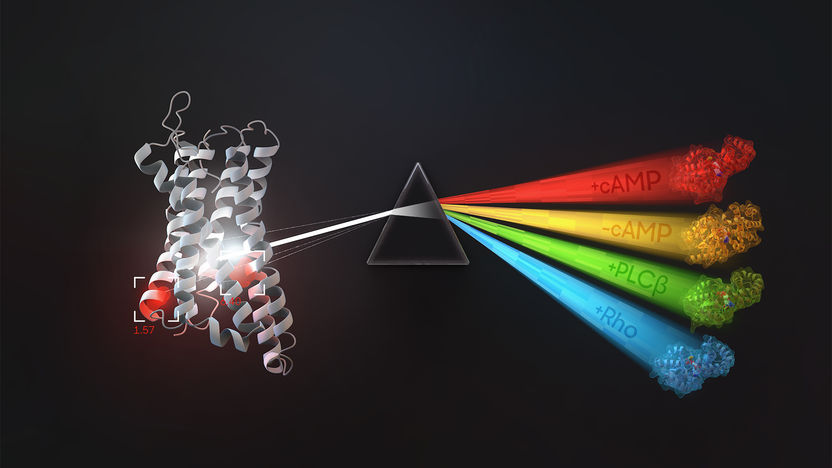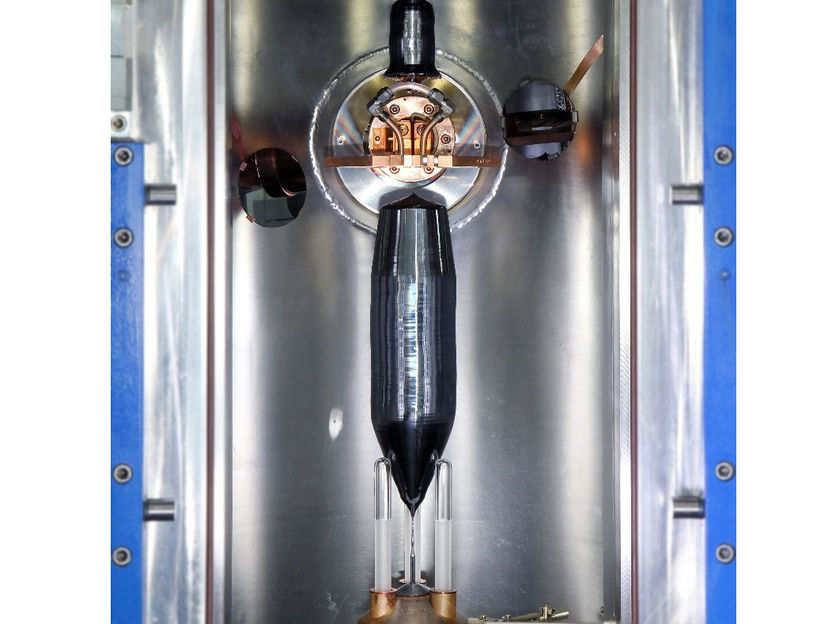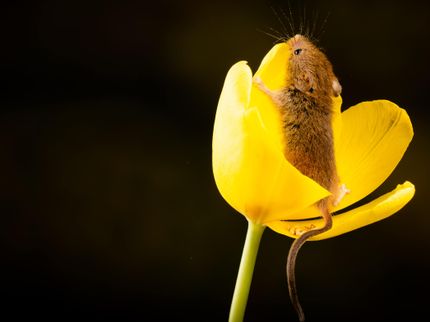Adenosine can melt "love handles"
The number of overweight persons is greatly increasing worldwide - and as a result is the risk of suffering a heart attack, stroke, diabetes or Alzheimer's disease. For this reason, many people dream of an efficient method for losing weight. An international team of researchers led by Professor Alexander Pfeifer from the University Hospital Bonn, have now come one step closer to this goal. The scientists discovered a new way to stimulate brown fat and thus burn energy from food: The body's own adenosine activates brown fat and "browns" white fat. The results are now being published in the renowned journal "Nature".
"Not all fat is equal," says Professor Alexander Pfeifer from the Institute of Pharmacology and Toxicology of the University Hospital Bonn. Humans have two different types of fat: undesirable white fat cells which form bothersome "love handles", for example, as well as brown fat cells, which act like a desirable heater to convert excess energy into heat. “If we are able to activate brown fat cells or to convert white fat cells into brown ones, it might be possible to simply melt excess fat away” reports the pharmacologist.
The group of Prof. Pfeifer together with an international team from Sweden, Denmark, Finland, as well as from the Helmholtz-Center Dresden-Rossendorf and the University of Düsseldorf now discovered a new signalling molecule capable of activating brown fat cells: adenosine. Adenosine is typically released during stress. Crucial for transmitting the adenosine signal is the adenosine receptor A2A.
Adenosine activates brown adipose tissue
"If adenosine binds to this receptor in brown fat cells, fat burning is significantly stimulated," reports Dr. Thorsten Gnad from Prof. Pfeifer's team. It was previously thought not possible for adenosine to activate brown fat. Several studies with rats and hamsters demonstrated that adenosine blocks brown fat.
However, the researchers from the University of Bonn were not mislead by these previous findings. In contrast, using brown fat cells removed from humans during surgery, the scientists investigated the signaling pathway for fat activation using adenosine. The results showed that rats and hamsters react differently than humans in this regard. "The brown fat in mice on the other hand behaves just as in humans," summarizes Prof. Pfeifer.
“Browning” of white fat by adenosine
In addition, the research team investigated the possibility that adenosine transforms white fat cells into brown fat cells - a process termed “browning”. White fat cells normally cannot be induced to burn excess fat by adenosine, as they simply lack the A2A receptor. For this reason, the team of scientists transferred the A2A receptor gene from brown fat cells to white fat cells in mice. Consequently, the white fat cells also have A2A receptors and start browning and burning energy.
Clinical application is still far off
As a result, it was possible for the researchers from the University of Bonn to comprehend the significance of adenosine for brown cells in mice and humans for the first time. "Through the administration of adenosine-like substances, the mice actually lost weight," reports Prof. Pfeifer. However, many questions in this regard still need to be investigated. For this reason, clinical application is still far off.
Original publication
Other news from the department science

Get the life science industry in your inbox
By submitting this form you agree that LUMITOS AG will send you the newsletter(s) selected above by email. Your data will not be passed on to third parties. Your data will be stored and processed in accordance with our data protection regulations. LUMITOS may contact you by email for the purpose of advertising or market and opinion surveys. You can revoke your consent at any time without giving reasons to LUMITOS AG, Ernst-Augustin-Str. 2, 12489 Berlin, Germany or by e-mail at revoke@lumitos.com with effect for the future. In addition, each email contains a link to unsubscribe from the corresponding newsletter.
Most read news
More news from our other portals
Last viewed contents

Can coffee improve memory? - Findings suggest the efficacy of Trigonelline derived from coffee in preventing and improving age-related spatial learning memory impairment

Can You Lose Weight? - Ask Your Microbiome

The DNA damage response goes viral: A way in for new cancer treatments - How DNA repair proteins sound the alarm to threats, pointing to a novel cancer therapy.

Coupled Proteins - How human cells react to external signals and further process them

OxDX raises £2.6M pre-seed funding to develop AI powered rapid diagnostic technology - Identify diseases while you wait: Technology aims to improve speed, cost and accuracy of infectious disease diagnostics






















































